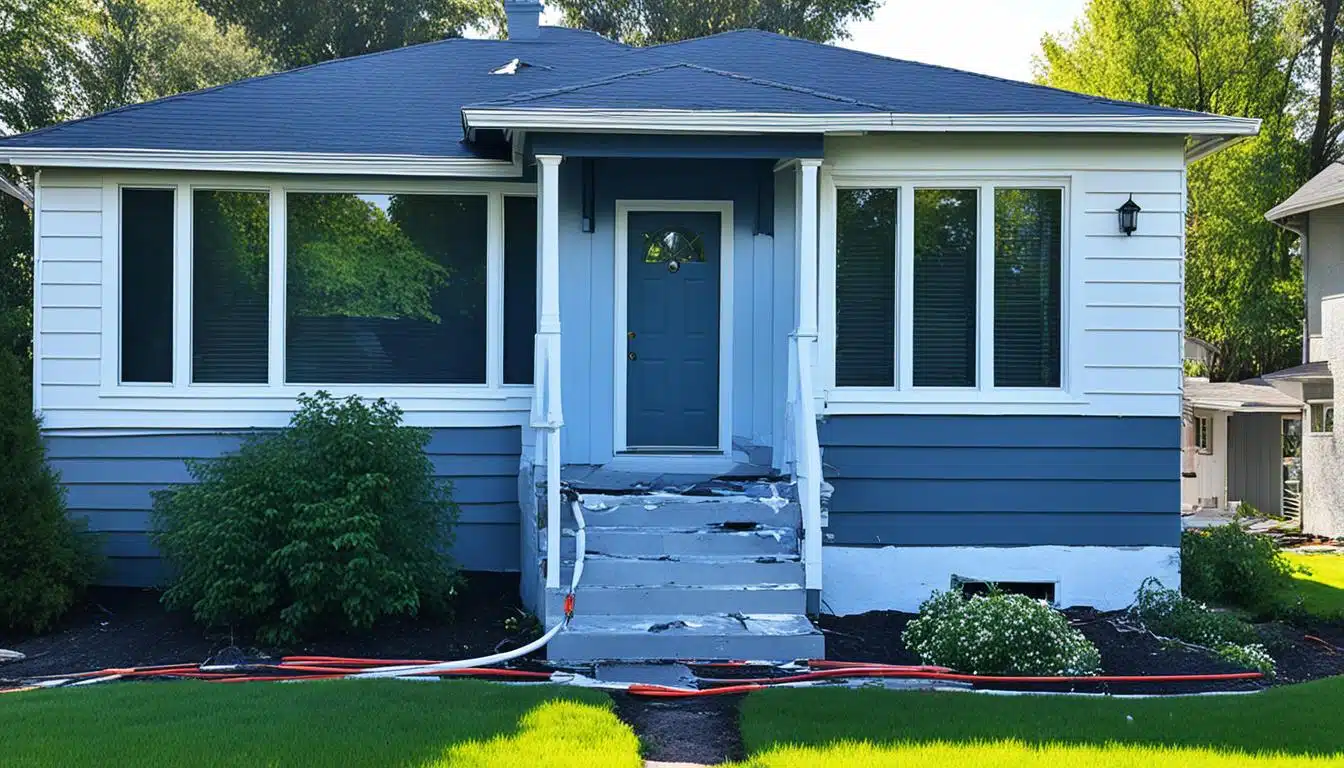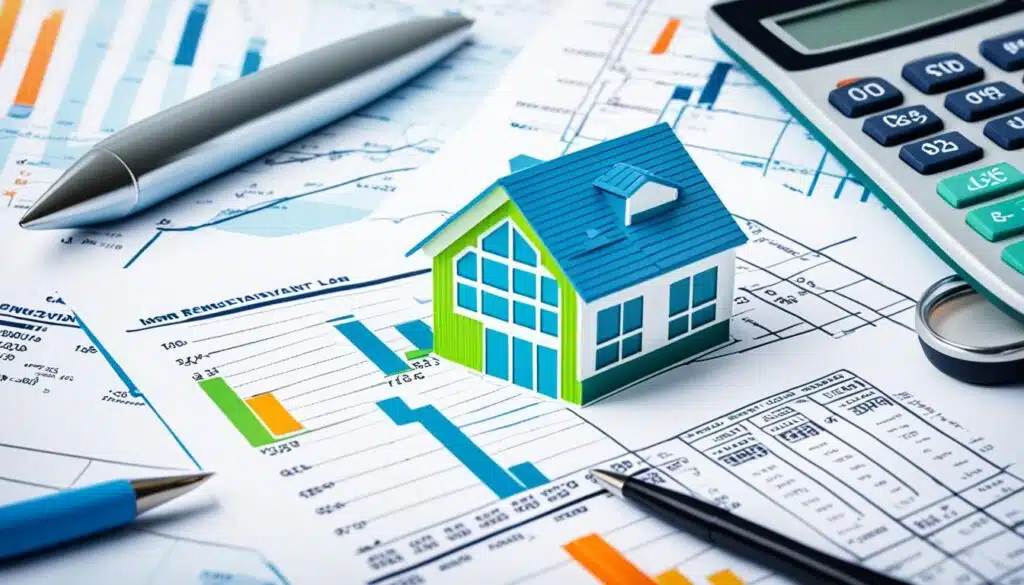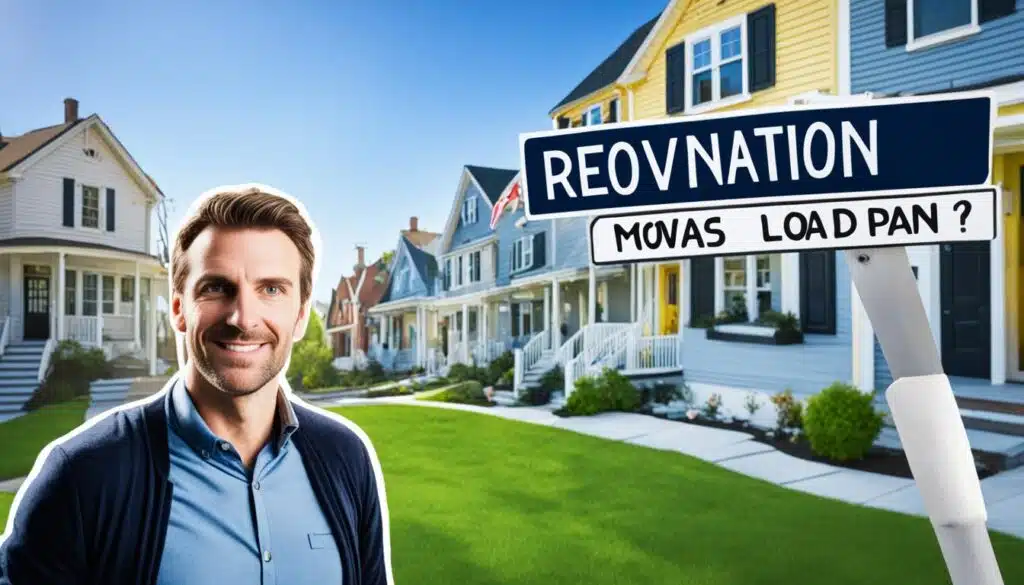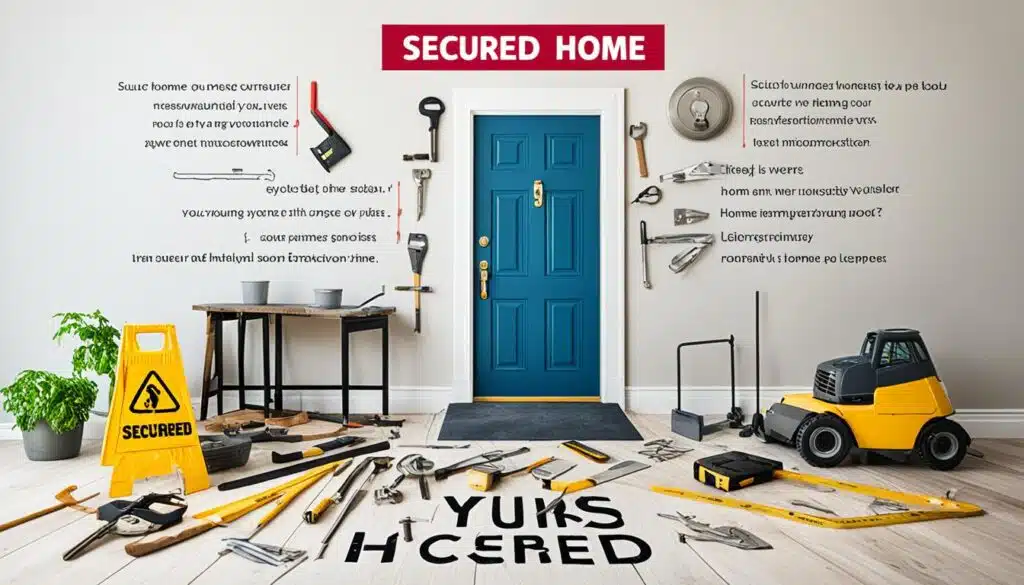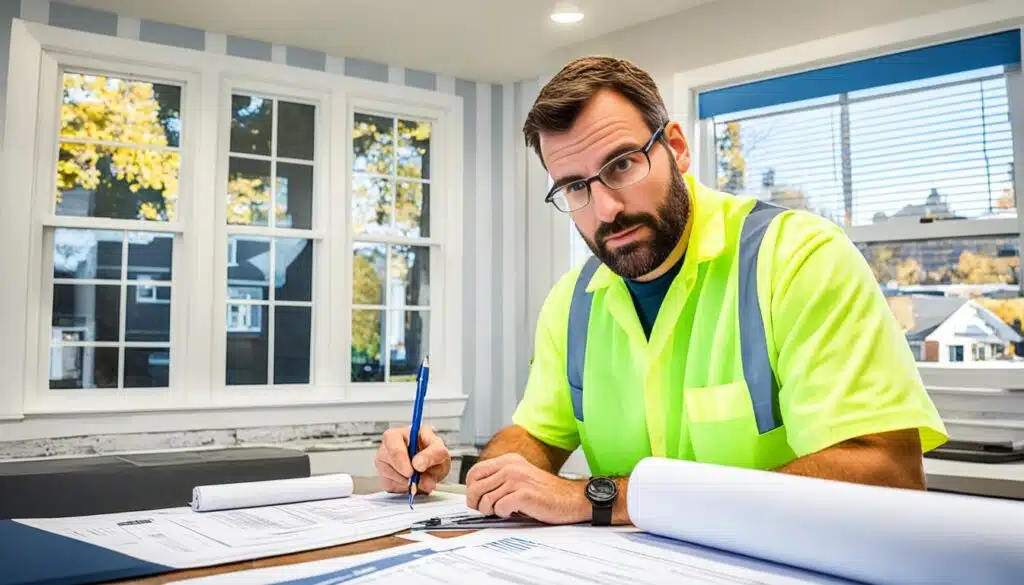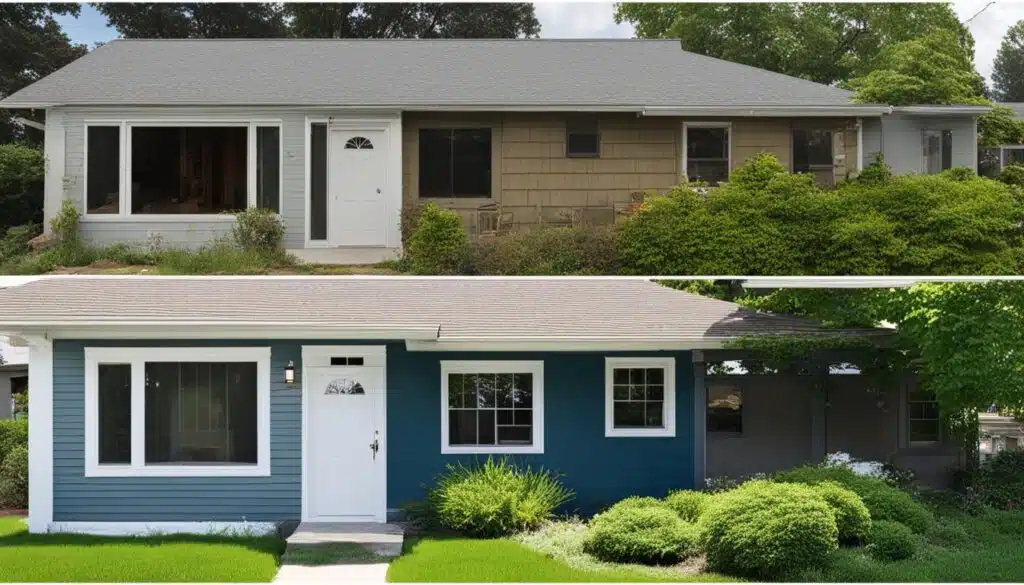A home renovation loan is a valuable tool that homeowners can utilize to transform their living space and bring their renovation dreams to life. Whether you’re planning a small update or a major overhaul, a home renovation loan provides the necessary financing to make your vision a reality.
There are various options available when it comes to home renovation loans, including home equity loans, personal loans, and government-backed loans like the FHA 203(k) loan. Each option has its own unique features and benefits, allowing you to choose the option that best fits your needs and financial situation.
With a home renovation loan, you can finance a wide range of projects, such as upgrading your kitchen, remodeling your bathroom, adding a new room, or even making structural changes to your home. The loan amount and interest rates will depend on factors such as your credit score, the equity in your home, and the scope of your renovation project.
Whether you’re a first-time renovator or an experienced homeowner, this comprehensive guide will walk you through the different types of home renovation loans, the benefits they offer, and how to choose the right loan for your specific needs. So, get ready to revitalize your space and create the home of your dreams!
Key Takeaways:
- A home renovation loan provides funds for upgrading, remodeling, and repairing a home.
- Options include home equity loans, personal loans, and government-backed loans like the FHA 203(k) loan.
- Interest rates and loan amounts will vary based on factors such as credit score, equity, and project scope.
- Home renovation loans offer lower interest rates compared to other forms of financing.
- Choosing the right loan involves considering factors such as interest rates, loan terms, and secured vs. unsecured options.
Understanding Home Renovation Loans: Types and Options
When it comes to financing your home improvement project, there are several types of home renovation loans available. Each option has its own requirements and terms, allowing you to find the best fit for your specific needs. Let’s explore the different loan options and understand how they can help you remodel your home.
1. Home Equity Line of Credit (HELOC)
A home equity line of credit, commonly known as a HELOC, allows you to borrow against the equity in your home. This revolving line of credit provides flexible financing for your home improvement needs. With a HELOC, you can access funds as needed, making it an ideal choice for ongoing projects or renovations with varying costs.
2. Personal Loans
If you’re looking for a quick and convenient financing option, a personal loan might be the right choice for you. Personal loans are unsecured loans, meaning you don’t need to provide collateral, such as your home, to secure the loan. This type of loan is based on your creditworthiness and income, making it accessible for a wide range of borrowers.
3. FHA 203(k) Loan
The FHA 203(k) loan is a government-backed loan program specifically designed for home renovations. This loan combines the cost of the home purchase or refinance with the expense of remodeling or repairing the property. It offers a single, fixed-rate mortgage with flexible terms and lower down payment requirements, making it an attractive option for renovation projects.
4. Credit Cards and Unsecured Personal Loans
For smaller home improvement projects, you can also consider using credit cards or unsecured personal loans. Credit cards offer convenience and flexibility, allowing you to finance your purchases and earn rewards. Unsecured personal loans, on the other hand, can provide a lump sum of money without the need for collateral.
Factors to Consider
When selecting the best home renovation loan option, several factors come into play. These include your credit score, the amount of equity in your home, the loan term you prefer, and the financing required for your specific remodel. By evaluating these aspects, you can choose the loan option that aligns with your budget and goals.
Finance your remodel with a home equity line of credit for flexibility, or opt for a personal loan for a quick and hassle-free solution. If you’re considering a government-backed loan, the FHA 203(k) loan can provide the necessary funds to finance your home improvements.
Remember to compare interest rates, repayment terms, and eligibility criteria to make an informed and suitable decision. Now, let’s take a closer look at the benefits of home renovation loans and why they are an excellent choice for homeowners looking to enhance their living spaces.
The Benefits of Home Renovation Loans
Home renovation loans offer several advantages for homeowners. These loans provide the funds needed to cover the costs of repairs and renovations, allowing you to improve the value and functionality of your home.
Also Read: Top 20 Popular Beaches In The World
One of the main benefits of home renovation loans is that they typically have lower interest rates compared to other forms of financing. This can result in significant savings over the repayment term of the loan, making it a more affordable option for homeowners.
Another advantage is the flexibility in choosing the type of loan that suits your needs. Home renovation loans can be secured or unsecured, depending on your financial situation and preferences.
A secured loan requires collateral, such as your home or other valuable assets, which can help you secure a lower interest rate. This type of loan is often preferred for larger renovation projects that require substantial funding.
Also Read: Top 20 Luxurious Hotels Revealed Across The Globe
On the other hand, an unsecured personal loan does not require collateral but may have a higher interest rate. This option is suitable for smaller-scale renovations or when you don’t want to use your home as collateral.
When considering a home renovation loan, it’s important to evaluate the annual percentage rate (APR) offered by different lenders. The APR includes both the interest rate and any additional fees associated with the loan, giving you a better understanding of the overall cost.
Ultimately, home renovation loans provide homeowners with the financial flexibility to transform their properties and create the living space of their dreams. Whether you’re making essential repairs or undertaking a major renovation project, these loans can be a valuable tool in achieving your home improvement goals.
Also Read: Top 20 Iconic Restaurants You Need To Try
Benefits of Home Renovation Loans:
- Lower interest rates compared to other forms of financing
- Flexibility in choosing between secured and unsecured loans
- Opportunity to improve the value and functionality of your home
- Potential for significant savings over the repayment term
- Versatility in funding various renovation projects
When to Consider a Home Renovation Loan
A home renovation loan can be a suitable option in various scenarios. It can help you pay for necessary home repairs or address discretionary projects without depleting your savings. Whether you need to fix a leaking roof or upgrade your kitchen, a home renovation loan provides the financial support you need to improve your living space.
Also Read: Easy Ways To Manage Your Money For A Better Future
Here are some situations where you might consider getting a home renovation loan:
- Urgent Home Repairs: If you’re facing unexpected home repairs that require immediate attention, such as fixing a broken plumbing system or repairing damages caused by natural disasters, a home renovation loan can help you cover the costs promptly.
- Desirable Home Improvements: Are you dreaming of a new bathroom, a modern kitchen, or an energy-efficient upgrade? A home renovation loan allows you to tackle these discretionary projects and enhance the comfort and aesthetics of your home.
- Buying a Fixer-Upper: If you’re considering purchasing a fixer-upper property, a home renovation loan can provide the necessary funds to cover the purchase price along with the renovation costs. This type of loan allows you to finance the total value of your property, including the renovations needed.
- Investing in Property: Investors looking to improve property value can benefit from a home renovation loan. By upgrading the condition of the property, you can attract potential tenants or increase its resale value.
It’s important to note that home renovation loans can be secured or unsecured. Secured loans require you to use your home as collateral, while unsecured loans do not require any collateral. Secured loans offer lower interest rates but come with the risk of losing your home if you default on the loan. Unsecured loans, on the other hand, have higher interest rates but do not put your home at risk.
Also Read: Affordable Health Insurance: How To Find Wallet-Friendly Plans
When applying for a home renovation loan, you’ll need to submit a loan application and provide information about the value of your home. Lenders will consider the loan amount you’re requesting, the value of your home, and your credit history to determine your eligibility and the interest rate you’ll be offered. It’s important to compare different loan options and their associated terms to find the best loan for your needs and financial situation.
| Loan Type | Interest Rate | Collateral Requirement |
|---|---|---|
| Secured Loan | Low | Home as collateral |
| Unsecured Loan | Higher | No collateral required |
Remember, before taking on a home renovation loan, carefully consider your financial situation and the long-term impact of the loan on your budget. Evaluate the value that the renovations will add to your home and the potential return on investment. By making an informed decision and planning your renovation project effectively, you can transform your home while managing your finances responsibly.
Choosing the Right Home Renovation Loan
When it comes to financing your home improvements, choosing the right loan is crucial. Consider factors such as interest rates, loan terms and conditions, and whether you prefer a secured or unsecured option. By comparing different loan offerings and understanding the specific requirements and benefits of each, you can make an informed decision that aligns with your needs and financial goals.
If you have substantial equity in your home, a home equity loan or home equity line of credit (HELOC) may be an ideal choice. These loans typically offer lower interest rates and longer repayment terms due to using your home as collateral. This option is especially beneficial for larger renovation projects that require higher loan amounts.
On the other hand, if you prefer loans that are unsecured and don’t require collateral, consider an unsecured personal loan. These loans are available for various purposes, including home improvements, and offer fixed interest rates and predictable monthly payments. Although unsecured loans may have higher interest rates compared to secured loans, they provide the flexibility of not risking your home.
Comparing Loan Options
| Loan Type | Interest Rate | Loan Amount | Terms and Conditions |
|---|---|---|---|
| Home Equity Loan | Fixed, typically lower | Based on equity | Collateral required; longer repayment terms |
| Home Equity Line of Credit (HELOC) | Variable, typically lower initially | Based on equity | Collateral required; revolving line of credit |
| Unsecured Personal Loan | Fixed, typically higher | Varies by lender and creditworthiness | No collateral required; shorter repayment terms |
By carefully assessing your financial situation and preferences, you can determine which loan option is best suited for your home improvement needs. Take into account factors such as the fixed interest rate, loan amount, and terms and conditions to ensure you choose the loan that offers the most favorable terms.
Remember to review all the terms and conditions of the loan before making a decision. Carefully reading and understanding the loan agreement will help you avoid any surprises and ensure that you are comfortable with the repayment plan. Additionally, consider seeking advice from a financial professional who can provide personalized guidance based on your specific circumstances.
Exploring FHA 203(k) Loans for Renovations
The FHA 203(k) loan is a popular option for homeowners looking to finance their home renovation projects. This government-backed loan allows you to roll the cost of renovation into your mortgage, providing a convenient and affordable financing solution.
Similar to home equity loans, FHA 203(k) loans offer competitive rates and terms, making them an attractive choice for homeowners. Whether you’re planning a small-scale home improvement personal loan or a large-scale renovation project, this loan can provide the necessary funds to transform your home.
When exploring financing options for your home improvement project, it’s important to consider the benefits of FHA 203(k) loans. Here are some key advantages:
- Convenient Financing: FHA 203(k) loans allow you to include the cost of renovations in your mortgage, eliminating the need for an additional loan or line of credit.
- Competitive Rates and Terms: These loans offer rates and terms similar to home equity loans, providing you with affordable repayment options.
- Flexibility: With an FHA 203(k) loan, you have the flexibility to customize your home according to your needs and preferences. Whether you want to update your kitchen, add an extra room, or improve energy efficiency, this loan can help you achieve your goals.
If you’re considering an FHA 203(k) loan, it’s important to note that these loans are available through various home improvement loan lenders. This means you have the freedom to compare rates, terms, and options to find the best fit for your renovation project.
| Loan Features | FHA 203(k) Loan | Home Equity Loan |
|---|---|---|
| Loan Type | Government-backed | Secured by home equity |
| Interest Rates | Competitive | Varies |
| Loan Amounts | Based on property value and renovation costs | Based on available home equity |
| Repayment Terms | Flexible | Varies |
The above table provides a comparison between FHA 203(k) loans and home equity loans. While both options can provide funds for your renovation project, an FHA 203(k) loan offers government-backed benefits and more flexibility in terms of loan amounts and repayment terms.
Keep in mind that applying for an FHA 203(k) loan involves a thorough loan application process. You’ll need to provide documentation related to your income, credit history, and renovation plans. Once approved, you can begin the renovation process and use the funds from the loan to cover the necessary expenses.
Exploring FHA 203(k) loans can be a valuable step in financing your home improvement project. With competitive rates, flexible terms, and the ability to customize your home, this loan can help you transform your living space according to your vision and needs.
The Scope of Renovations Covered by the FHA 203(k) Loan
The FHA 203(k) loan is a versatile financing option that can help homeowners tackle a wide range of renovations, from minor repairs to major home improvement projects. Whether you’re looking to fix a leaking pipe, replace a roof, or revamp your entire kitchen, this loan can provide the necessary funds to turn your vision into reality.
Here are some examples of the renovations covered by the FHA 203(k) loan:
- Minor repairs: The loan can help pay for home repairs such as fixing plumbing issues, electrical problems, or repairing damaged flooring.
- Roof replacements: If your roof is old or damaged, the FHA 203(k) loan can cover the costs of replacing it to protect your home from further damage.
- Home system upgrades: Whether you need to update your HVAC system, install new plumbing fixtures, or upgrade your electrical panel, the loan can be used to finance these essential improvements.
- Kitchen remodels: Transform your kitchen into a culinary haven by using the loan to invest in new appliances, countertops, cabinets, and flooring.
- Room additions: If you need more space, the loan can help fund the construction of an additional room, whether it’s a bedroom, home office, or entertainment area.
- Energy-efficient upgrades: Make your home more environmentally friendly and reduce utility costs by using the loan to install energy-efficient windows, insulation, or solar panels.
- Accessibility improvements: The FHA 203(k) loan can cover the costs of modifying your home to make it more accessible, such as adding ramps, widening doorways, or installing grab bars.
These are just a few examples of the renovations that can be covered by the FHA 203(k) loan. Whether you have a small project in mind or want to undertake a major home transformation, this loan offers the flexibility and financial support you need to bring your renovation plans to life.
The FHA 203(k) Loan Application Process
The application process for an FHA 203(k) loan involves several steps that allow you to secure the financing needed to bring your home renovation plans to life. Here’s how to apply:
- Find an Approved Lender: Start by researching and identifying lenders who offer FHA 203(k) loans. These lenders are approved by the Federal Housing Administration (FHA) to provide this type of loan.
- Gather Documentation: Prepare the necessary documents to support your loan application. This includes proof of income, credit history, and information about your renovation plans. Ensure all the required paperwork is well-organized and readily available.
- Assess Eligibility: The lender will review your documentation and assess your eligibility based on factors such as your credit score and the equity in your home. Having a good credit score and sufficient equity in your property can improve your chances of approval.
- Loan Application: Once you have identified an approved lender and completed the necessary documentation, submit your loan application. The lender will review your application and provide you with an offer based on your financial situation and the loan program.
- Loan Approval and Disbursement: If your application is approved, you will receive a loan offer outlining the terms and conditions. Carefully review the offer and if you are satisfied, accept it. The lender will disburse the funds directly or in stages to cover the costs of the renovations.
With the funds from the FHA 203(k) loan, you can proceed with the renovation process. Pay for the necessary repairs and improvements while adhering to the approved loan amount. Keep in mind that the equity in your home serves as collateral for the loan.
In summary, the FHA 203(k) loan application process involves finding an approved lender, gathering the necessary documents, assessing your eligibility, submitting the loan application, and upon approval, using the funds to pay for the home renovations.
Case Studies: Successful Home Renovation Projects with FHA 203(k) Loans
Many homeowners have experienced the benefits of using an FHA 203(k) loan to finance their home renovation projects. These loans have helped transform houses into personalized living spaces while increasing their value. Let’s explore a few case studies that highlight the versatility and success of FHA 203(k) loans in different types of renovations.
Case Study 1: Kitchen Remodel
Rachel and Mark Thompson were considering a home improvement to modernize their outdated kitchen. With the help of an FHA 203(k) loan, they were able to finance the entire renovation, which included new cabinets, countertops, and appliances. The loan came with a fixed interest rate and a repayment term that suited their budget. The Thompsons were thrilled with the transformation and the increased functionality of their kitchen.
Case Study 2: Room Addition
Michael and Sarah Johnson wanted to add an extra bedroom to accommodate their growing family. They found that an FHA 203(k) loan was the perfect solution to finance this major home improvement project. The loan allowed them to hire contractors and cover all the costs associated with the room addition, including construction materials, labor, and permits. The Johnsons were pleased with the seamless process and the value that the additional bedroom added to their home.
Case Study 3: Structural Repairs
John and Lisa Davis discovered significant structural issues in their old home. To address these repairs, they turned to an FHA 203(k) loan. The loan gave them the flexibility to hire professionals and make the necessary fixes to their home’s foundation and roof. By financing these crucial repairs, the Davises were able to ensure the safety of their home and preserve its value for years to come.
| Common Home Improvements | Loan Used |
|---|---|
| Kitchen Remodel | FHA 203(k) loan |
| Room Addition | FHA 203(k) loan |
| Structural Repairs | FHA 203(k) loan |
These case studies demonstrate how an FHA 203(k) loan can be used for various types of renovation projects. Whether it’s a kitchen remodel, a room addition, or major structural repairs, this loan provides the necessary funds to turn your vision into reality. By leveraging the benefits of an FHA 203(k) loan, homeowners can revitalize their space and create a home that truly reflects their personal style and needs.
Best Home Improvement Loans
How to get a home improvement personal loan
Conclusion
A home renovation loan offers homeowners a valuable financing option to upgrade their living space and create a home that reflects their style and comfort. Whether you’re considering a home equity loan, personal loan, or the government-backed FHA 203(k) loan, there are various remodeling loan options available to meet your specific needs.
By understanding the loan terms, interest rates, and renovation loan programs, you can make an informed decision and secure the home improvement financing that aligns with your budget and goals. Whether you’re looking for house renovation funding or a renovation mortgage, it’s important to explore different options and use tools like a renovation loan calculator to estimate costs and repayment terms.
With the right home refurbishment loan in place, you can embark on your renovation project with confidence. Whether you’re planning minor repairs or major transformations, home renovation financing solutions can provide the necessary funds to bring your vision to life. Improve the value and functionality of your home through a renovation loan and create a space that truly feels like home.
FAQs
Q: What is a home improvement loan?
A: A home improvement loan is a type of loan specifically designed to finance home improvements, such as renovations, repairs, or additions to your property.
Q: How do home improvement loans work?
A: Home improvement loans work by providing you with funds upfront, which you can then use to pay for your home renovation projects. You will typically repay the loan amount, plus interest, in monthly installments over a set period of time.
Q: What are the types of home improvement loans available?
A: Some common types of home improvement loans include personal loans for home improvements, home equity loans, and unsecured home improvement loans.
Q: How can I get a home improvement loan?
A: To get a home improvement loan, you can approach banks, credit unions, or online lenders that offer such loan products. You will need to meet their eligibility criteria and submit the necessary documents for approval.
Q: What are the interest rates for home improvement loans?
A: The interest rates for home improvement loans can vary depending on the lender, your credit score, and the type of loan you choose. It’s advisable to compare rates from different lenders to find the best option for you.
Q: How to determine if a home improvement loan is the right choice for me?
A: You should consider factors such as the interest rate, repayment terms, total cost of the loan, and your ability to repay before deciding if a home improvement loan is the right choice for your renovation project.
Q: What are the common home improvement projects that people use loans for?
A: Homeowners often use home improvement loans to fund projects like kitchen remodels, bathroom renovations, roof repairs, room additions, or landscaping improvements.
Q: Can home improvement loans be used to finance other expenses besides renovations?
A: While home improvement loans are meant for renovation purposes, some lenders may allow you to use the funds for related expenses like furniture purchases, energy-efficient upgrades, or repair work.
